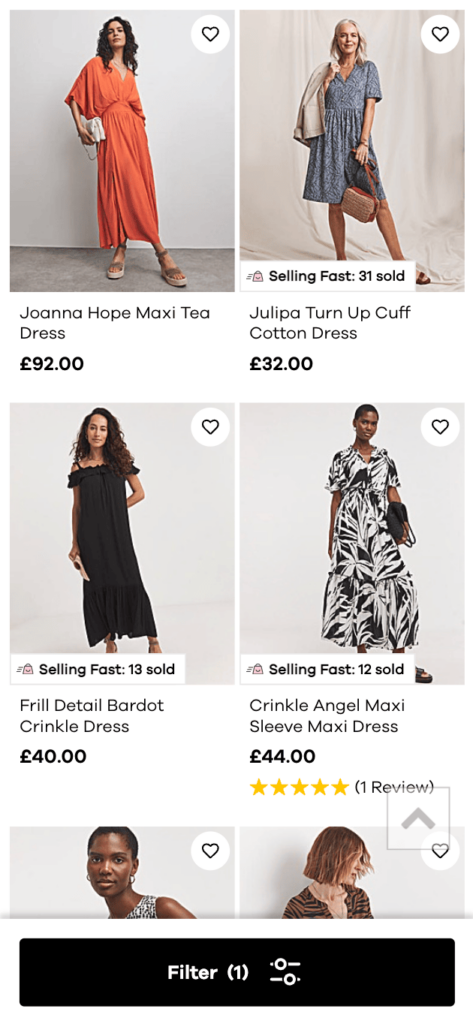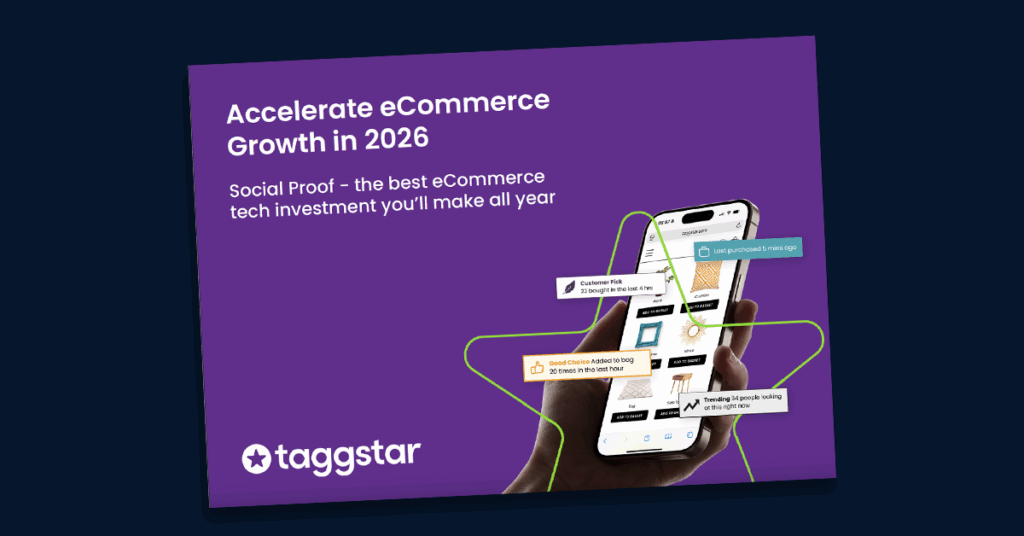Global mobile eCommerce sales are projected to reach $3.4 trillion by 2027, making up 62% of all eCommerce sales around the world.
These figures signify why it is essential for brands and retailers to invest in optimising the mobile experience and focus on increasing mobile conversion rates.
Mobile conversion refers to the process of converting site visitors on a mobile device into customers or leads. Just like regular conversions, mobile conversions typically involve completing a specific action like making a purchase, filling out a form or downloading an app.
If you have a high mobile conversion rate it indicates that your mobile site is effectively engaging visitors and encouraging them to take a desired action.
It’s pretty simple – with such a significant portion of online shopping being done via mobile devices, if your site is not optimised, you risk losing potential customers, sales and revenue.
Top 8 ways to improve eCommerce mobile conversion rates
When developing strategies for improving mobile conversion rates, you must take into account how your customers are using their mobile devices as part of their shopping journeys. Generally, shoppers are more likely to complete a purchase when they can easily navigate and interact with your site.
Behaviours will differ based on your target audience demographics, but the following tactics are universally proven to enhance mobile experiences, increase mobile conversion rates and boost sales.
1. Leverage a responsive design.
Over half of global web traffic comes from mobile devices, and it is, therefore, imperative that the user experience adapts to different screen sizes.
A responsive design allows an eCommerce site to dynamically adapt to different screen sizes and devices. Responsive design simplifies the layout, ensures that buttons are appropriately sized, and makes text readable.
This streamlined experience ensures that mobile shoppers can easily browse, add products to the cart, and checkout, reducing friction in the buying journey and leading to higher conversion rates.
2. Simplify mobile navigation
Often on the go and browsing on smaller screens, mobile shoppers tend to have shorter attention spans. Complex and cluttered mobile navigation can cause frustration and lead to higher bounce rates and cart abandonment. A simple and intuitive navigation with a straightforward menu structure and clear categorisation reduces friction and makes it easier for customers to find what they want quickly.
With less space, it is also important to prioritise key features like search, cart and account information, where it is easy to find, at the top of the screen.
3. Optimise search functionality
Rather than navigating busy menus on a small screen, many mobile shopping journeys start with the search bar. Enhancing search functionality can significantly improve the shopping experience and drive conversions. The search bar should be prominently featured and should be intuitive, fast, and efficient, and should include best-practice functionality like auto-suggestions, search history, popular searches, instant results, and easy-to-tap options.
You can further enhance the mobile search experience by implementing visual search features that allow users to upload and search by photos to find similar products as well as QR and barcode scanning functionality.
4. Implement mobile-friendly checkout process
Mobile shoppers are prone to abandon their carts because of the smaller screen size. They are also often shopping on the go and are more distracted. In fact, 85% of mobile shoppers fail to make it to checkout. Sometimes, they abandon the cart simply because it is too difficult to enter information. To enhance the mobile experience and reduce high mobile abandonment rates, it is critical to offer a streamlined, user-friendly, and efficient checkout process.
Retailers and brands can optimise the mobile checkout process by minimising the number of steps a shopper has to take to complete a transaction. This includes offering guest checkout options and minimising and pre-populating form fields when possible, including progress bars and clear CTA buttons.
5. Offer mobile payment options
On the go customers appreciate the easiest and most convenient checkout possible, including the final step of completing the transaction.
Popular mobile payment options, such as Apple Pay, Google Pay and Paypal, help make the checkout process more convenient and faster for shoppers, significantly reducing cart abandonment and increasing mobile conversion rates.
6. Optimise page loading speed
Mobile shoppers expect quick and smooth browsing experiences, and if an eCommerce site takes too long to load, they are likely to abandon it quickly.
Page loads directly impact the mobile user experience, conversions as well as customer retention. Faster sites also tend to rank better on search engines, improving visibility and attracting more visitors.
While high-quality images are critical to the user experience, large images can significantly slow down loading times on mobile devices. It is important to prioritize compressing images, reduce redirects, and utilize caching to ensure that sites load as fast as possible.
7. Leverage social proof
Retailers and brands can elevate the mobile shopping experience by incorporating and highlighting social proof above the fold.
Customer ratings and reviews build trust and are proven highly effective in improving conversions, but on a small device, this content is typically pushed below the fold. Social proof messaging aggregates real-time customer behaviour trends that can be displayed above the fold and can even be integrated with review data to highlight the most relevant and effective content.
Retailers and brands can also leverage attribute messaging to highlight relevant product details upfront, enabling shoppers to easily and quickly determine if a product is right for them, encouraging them to click-through.
When JD Williams implemented social proof messaging across the shopping journey, the company discovered that mobile shoppers, particularly, were more likely to navigate from the PLP to the PDP and cart, ultimately increasing mobile conversion rates by 2%.

8. Always improve with A/B testing
Mobile conversion rate optimisation is an ongoing process, and it is critical to continuously test and validate different approaches.
A/B testing is one of the easiest and most effective ways to continuously test different strategies, messaging, content, design, layouts and CTAs to determine what resonates best with mobile shoppers. Retailers and brands should use these insights to refine and improve their mobile site to boost mobile conversion rates.
How Taggstar can help improve mobile conversion rate for your eCommerce site.
As the importance of mobile in the shopping journey continues to rise, it is paramount to continuously invest in mobile optimisation.
By implementing the strategies outlined above retailers and brands can create a smoother, more engaging shopping experience on mobile devices, ultimately leading to higher conversion rates on mobile devices.
Taggstar’s social proof solutions are designed to boost conversion rates across all devices. By leveraging the power of the crowd, social proof enables retailers and brands to deliver relevant shopping experiences that help shoppers make better and more confident purchase decisions.
Contact us to learn how leading retailers and brands across industries leverage social proof and attribute messaging to optimise the mobile shopping experience and boost mobile conversion rates.




